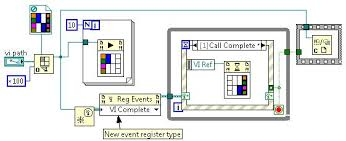目录
map和set的使用
1. 序列式容器和关联式容器
2. set系列的使⽤
2.1 set和multiset参考⽂档
2.2 set类的介绍
2.3 set的构造和迭代器
2.4 set的增删查
set的增删查关注以下⼏个接⼝即可:
2.6 find和erase使⽤样例:
lower_bound(); upper_bound();
2.7 multiset和set的差异(可重复set(multiset))
那么到这里来一个set使用的例题
下一题,环形链表也超简单。
3. map系列的使⽤
3.1 map和multimap参考⽂档
3.2 map类的介绍
3.3 pair类型介绍
3.4 map的构造
3.5 map的增删查
3.6 map的数据修改
3.7 构造遍历及增删查使⽤样例
3.8 map的迭代器和[]功能样例:
利用operator[] 来统计水果出现的次数
3.9 multimap和map的差异
最后,来看一个运用列题:
总结:第一次做的时候总想着自己创建一个头节点,然后把整个链表跟它一样先把所有next串起来再进行查找,可是看完题解后,别人全用hash存起来后在进行连接是真的方便。
map和set的使用
1. 序列式容器和关联式容器
2. set系列的使⽤
2.1 set和multiset参考⽂档
2.2 set类的介绍
• set的声明如下,T就是set底层关键字的类型• set默认要求T⽀持⼩于⽐较,如果不⽀持或者想按⾃⼰的需求⾛可以⾃⾏实现仿函数传给第⼆个模版参数• set底层存储数据的内存是从空间配置器申请的,如果需要可以⾃⼰实现内存池,传给第三个参数。• ⼀般情况下,我们都不需要传后两个模版参数。• set底层是⽤红⿊树实现,增删查效率是O ( logN ) ,迭代器遍历是⾛的搜索树的中序,所以是有序的。• 前⾯部分我们已经学习了vector / list等容器的使⽤,STL容器接⼝设计,⾼度相似,所以这⾥我们就不再⼀个接⼝⼀个接⼝的介绍,⽽是直接带着⼤家看⽂档,挑⽐较重要的接⼝进⾏介绍。
template < class T, // set::key_type/value_typeclass Compare = less<T>, // set::key_compare/value_compareclass Alloc = allocator<T>, // set::allocator_type> class set;

2.3 set的构造和迭代器
// empty (1) ⽆参默认构造
explicit set (const key_compare& comp = key_compare(),
const allocator_type& alloc = allocator_type());// range (2) 迭代器区间构造
template <class InputIterator>
set (InputIterator first, InputIterator last,const key_compare& comp = key_compare(),const allocator_type& = allocator_type());// copy (3) 拷⻉构造
set (const set& x);// initializer list (5) initializer 列表构造
set (initializer_list<value_type> il,const key_compare& comp = key_compare(),const allocator_type& alloc = allocator_type());// 迭代器是⼀个双向迭代器
iterator -> a bidirectional iterator to const value_type// 正向迭代器
iterator begin();
iterator end();// 反向迭代器
reverse_iterator rbegin();
reverse_iterator rend();2.4 set的增删查
set的增删查关注以下⼏个接⼝即可:
// 单个数据插⼊,如果已经存在则插⼊失败
pair<iterator,bool> insert (const value_type& val);
int main()
{set<int> s;s.insert(1);s.insert(2);s.insert(3);s.insert(4);auto it = s.begin();while (it != s.end()){cout << *it << " ";it++;}return 0;
}// 列表插⼊,已经在容器中存在的值不会插⼊
void insert (initializer_list<value_type> il);
// 迭代器区间插⼊,已经在容器中存在的值不会插⼊
template <class InputIterator>
void insert (InputIterator first, InputIterator last);
int main()
{set<int> s;s.insert(1);s.insert(2);s.insert(3);s.insert(3);s.insert(4);auto it = s.begin();while (it != s.end()){cout << *it << " ";it++;}return 0;
}// 查找val,返回val所在的迭代器,没有找到返回end()
iterator find (const value_type& val);
auto it = s.find(3);
cout << *it << endl;// 查找val,返回Val的个数
size_type count (const value_type& val) const;因为set具有去重的能力,那么count就可以用来判断是否存在这个val
cout << s.count(3) << endl;// 删除⼀个迭代器位置的值
iterator erase (const_iterator position);
这里注意不能再while里面删除后再之间访问,会造成迭代器失效,要么就删除一个,然后再将这个迭代器赋值给it
// 删除val,val不存在返回0,存在返回1
size_type erase (const value_type& val);
s.erase(3);
auto it = s.begin();
while (it != s.end())
{cout << *it << " ";it++;
}// 删除⼀段迭代器区间的值
iterator erase (const_iterator first, const_iterator last);
左闭右开区间,那么就删除[2,5)之间的值,但不会删除5
auto first = s.find(2);
auto end = s.find(5);
s.erase(first, end);
auto it = s.begin();
while (it != s.end())
{cout << *it << " ";it++;
}// 返回⼤于等于val位置的迭代器
iterator lower_bound (const value_type& val) const;
// 返回⼤于val位置的迭代器
iterator upper_bound (const value_type& val) const;
//10 20 30 40 50 60 //>=25 那么就是从30开始
auto first = s.lower_bound(25); //>55的迭代器,那么就是60
auto end = s.upper_bound(55);
s.erase(first, end);
auto it = s.begin();
while (it != s.end())
{cout << *it << " ";it++;
}
//10 20 60#include<iostream>
#include<set>
using namespace std;
int main()
{// 去重+升序排序set<int> s;// 去重+降序排序(给⼀个⼤于的仿函数)//set<int, greater<int>> s;s.insert(5);s.insert(2);s.insert(7);s.insert(5);//set<int>::iterator it = s.begin();auto it = s.begin();while (it != s.end()){// error C3892: “it”: 不能给常量赋值// *it = 1;cout << *it << " ";++it;}cout << endl;// 插⼊⼀段initializer_list列表值,已经存在的值插⼊失败s.insert({ 2,8,3,9 });for (auto e : s){cout << e << " ";}cout << endl;set<string> strset = { "sort", "insert", "add" };// 遍历string⽐较ascll码⼤⼩顺序遍历的for (auto& e : strset){cout << e << " ";}cout << endl;
}2.6 find和erase使⽤样例:
#include<iostream>
#include<set>
using namespace std;
int main()
{set<int> s = { 4,2,7,2,8,5,9 };for (auto e : s){cout << e << " ";}cout << endl;// 删除最⼩值s.erase(s.begin());for (auto e : s){cout << e << " ";}cout << endl;// 直接删除xint x;cin >> x;int num = s.erase(x);if (num == 0){cout << x << "不存在!" << endl;}for (auto e : s){cout << e << " ";}cout << endl;// 直接查找在利⽤迭代器删除xcin >> x;auto pos = s.find(x);if (pos != s.end()){s.erase(pos);}else{cout << x << "不存在!" << endl;}for (auto e : s){cout << e << " ";}cout << endl;// 算法库的查找 O(N)auto pos1 = find(s.begin(), s.end(), x);// set⾃⾝实现的查找 O(logN)auto pos2 = s.find(x);// 利⽤count间接实现快速查找cin >> x;if (s.count(x)){cout << x << "在!" << endl;}else{cout << x << "不存在!" << endl;}return 0;
}lower_bound(); upper_bound();
#include<iostream>
#include<set>
using namespace std;
int main()
{std::set<int> myset;for (int i = 1; i < 10; i++)myset.insert(i * 10); // 10 20 30 40 50 60 70 80 90for (auto e : myset){cout << e << " ";}cout << endl;// 实现查找到的[itlow,itup)包含[30, 60]区间// 返回 >= 30auto itlow = myset.lower_bound(30);// 返回 > 60auto itup = myset.upper_bound(60);// 删除这段区间的值myset.erase(itlow, itup);for (auto e : myset){cout << e << " ";}cout << endl;return 0;
}2.7 multiset和set的差异(可重复set(multiset))
#include<iostream>
#include<set>
using namespace std;
int main()
{// 相⽐set不同的是,multiset是排序,但是不去重multiset<int> s = { 4,2,7,2,4,8,4,5,4,9 };auto it = s.begin();while (it != s.end()){cout << *it << " ";++it;}cout << endl;// 相⽐set不同的是,x可能会存在多个,find查找中序的第⼀个int x;cin >> x;auto pos = s.find(x);while (pos != s.end() && *pos == x){cout << *pos << " ";++pos;}cout << endl;// 相⽐set不同的是,count会返回x的实际个数cout << s.count(x) << endl;// 相⽐set不同的是,erase给值时会删除所有的xs.erase(x);for (auto e : s){cout << e << " ";}cout << endl;return 0;
}那么到这里来一个set使用的例题

class Solution {
public:vector<int> intersection(vector<int>& nums1, vector<int>& nums2) {set<int> s;for(auto e : nums1){s.insert(e);}set<int> st;for(auto e : nums2){st.insert(e);}vector<int> v;//只是在遍历s中的每一个元素 与st中的每一个元素进行比较for(auto e:s){if(st.find(e)!=st.end()){v.push_back(e);}}return v;}
};下一题,环形链表也超简单。

我记得只学C语言的时候,那个时候用快慢双指针来找规律,用快指针去追慢指针,那么这个时候就会发现是否存在环,但是这种办法太慢,要思考很仔细,如果你用set来进行判断,每次都添加节点,如果有一次下一个节点在里面存在就说明有环,否则就没有,就变得非常简单。
/*** Definition for singly-linked list.* struct ListNode {* int val;* ListNode *next;* ListNode(int x) : val(x), next(NULL) {}* };*/
class Solution {
public:ListNode *detectCycle(ListNode *head) {unordered_map<ListNode*,int> hash;ListNode* root=head;while(root){hash[root]++;if(hash[root]==2) return root;root=root->next;}return root;}
};3. map系列的使⽤
3.1 map和multimap参考⽂档
3.2 map类的介绍
map的声明如下,Key就是map底层关键字的类型,T是map底层value的类型,set默认要求Key⽀持⼩于⽐较,如果不⽀持或者需要的话可以⾃⾏实现仿函数传给第⼆个模版参数,map底层存储数据的内存是从空间配置器申请的。⼀般情况下,我们都不需要传后两个模版参数。map底层是⽤红⿊树实现,增删查改效率是 O ( logN ) ,迭代器遍历是⾛的中序,所以是按key有序顺序遍历的。
template < class Key, // map::key_typeclass T, // map::mapped_typeclass Compare = less<Key>, // map::key_compareclass Alloc = allocator<pair<const Key, T> > //map::allocator_type> class map;
3.3 pair类型介绍
typedef pair<const Key, T> value_type;template <class T1, class T2>
struct pair
{typedef T1 first_type;typedef T2 second_type;T1 first;T2 second;pair() : first(T1()), second(T2()){}pair(const T1& a, const T2& b) : first(a), second(b){}template<class U, class V>pair(const pair<U, V>& pr) : first(pr.first), second(pr.second){}
};template <class T1, class T2>
inline pair<T1, T2> make_pair(T1 x, T2 y)
{return (pair<T1, T2>(x, y));
}3.4 map的构造
map的⽀持正向和反向迭代遍历,遍历默认按key的升序顺序,因为底层是⼆叉搜索树,迭代器遍历⾛的中序;⽀持迭代器就意味着⽀持范围for,map⽀持修改value数据,不⽀持修改key数据,修改关键字数据,破坏了底层搜索树的结构。
// empty (1) ⽆参默认构造
explicit map(const key_compare& comp = key_compare(),const allocator_type& alloc = allocator_type());// range (2) 迭代器区间构造
template <class InputIterator>
map(InputIterator first, InputIterator last,const key_compare& comp = key_compare(),const allocator_type & = allocator_type());// copy (3) 拷⻉构造
map(const map& x);// initializer list (5) initializer 列表构造
map(initializer_list<value_type> il,const key_compare& comp = key_compare(),const allocator_type& alloc = allocator_type());// 迭代器是⼀个双向迭代器
iterator->a bidirectional iterator to const value_type// 正向迭代器
iterator begin();
iterator end();// 反向迭代器
reverse_iterator rbegin();
reverse_iterator rend();
3.5 map的增删查
map增接⼝,插⼊的pair键值对数据,跟set所有不同,但是查和删的接⼝只⽤关键字key跟set是完全类似的,不过find返回iterator,不仅仅可以确认key在不在,还找到key映射的value, 同时通过迭代还可以修改value 。
Member types
key_type->The first template parameter(Key)
mapped_type->The second template parameter(T)
value_type->pair<const key_type, mapped_type>// 单个数据插⼊,如果已经key存在则插⼊失败,key存在相等value不相等也会插⼊失败
pair<iterator, bool> insert(const value_type& val);// 列表插⼊,已经在容器中存在的值不会插⼊
void insert(initializer_list<value_type> il);// 迭代器区间插⼊,已经在容器中存在的值不会插⼊
template <class InputIterator>
void insert(InputIterator first, InputIterator last);// 查找k,返回k所在的迭代器,没有找到返回end()
iterator find(const key_type& k);// 查找k,返回k的个数
size_type count(const key_type& k) const;// 删除⼀个迭代器位置的值
iterator erase(const_iterator position);// 删除k,k存在返回0,存在返回1
size_type erase(const key_type& k);// 删除⼀段迭代器区间的值
iterator erase(const_iterator first, const_iterator last);// 返回⼤于等k位置的迭代器
iterator lower_bound(const key_type& k);// 返回⼤于k位置的迭代器
const_iterator lower_bound(const key_type& k) const;3.6 map的数据修改
前⾯我提到map⽀持修改mapped_type 数据,不⽀持修改key数据,修改关键字数据,破坏了底层搜索树的结构。map第⼀个⽀持修改的⽅式时通过迭代器,迭代器遍历时或者find返回key所在的iterator修改,map还有⼀个⾮常重要的修改接⼝operator[],但是operator[]不仅仅⽀持修改,还⽀持插⼊数据和查找数据,所以他是⼀个多功能复合接⼝需要注意从内部实现⻆度,map这⾥把我们传统说的value值,给的是T类型,typedef为mapped_type。⽽value_type是红⿊树结点中存储的pair键值对值。⽇常使⽤我们还是习惯将这⾥的T映射值叫做value。
operator[] 很重要,在各类算法题里都常常用到。
Member types
key_type->The first template parameter(Key)
mapped_type->The second template parameter(T)
value_type->pair<const key_type, mapped_type>
// 查找k,返回k所在的迭代器,没有找到返回end(),如果找到了通过iterator可以修改key对应的
mapped_type值
iterator find(const key_type& k);
// ⽂档中对insert返回值的说明
// The single element versions (1) return a pair, with its member pair::first
//set to an iterator pointing to either the newly inserted element or to the
//element with an equivalent key in the map.The pair::second element in the pair
//is set to true if a new element was inserted or false if an equivalent key
//already existed.
// insert插⼊⼀个pair<key, T>对象
// 1、如果key已经在map中,插⼊失败,则返回⼀个pair<iterator,bool>对象,返回pair对象
//first是key所在结点的迭代器,second是false
// 2、如果key不在在map中,插⼊成功,则返回⼀个pair<iterator,bool>对象,返回pair对象
//first是新插⼊key所在结点的迭代器,second是true
// 也就是说⽆论插⼊成功还是失败,返回pair<iterator,bool>对象的first都会指向key所在的迭
//代器
// 那么也就意味着insert插⼊失败时充当了查找的功能,正是因为这⼀点,insert可以⽤来实现operator[]
// 需要注意的是这⾥有两个pair,不要混淆了,⼀个是map底层红⿊树节点中存的pair<key, T>,另
//⼀个是insert返回值pair<iterator, bool>
pair<iterator, bool> insert(const value_type & val);
mapped_type& operator[] (const key_type& k);
// operator的内部实现
mapped_type& operator[] (const key_type& k)
{// 1、如果k不在map中,insert会插⼊k和mapped_type默认值,同时[]返回结点中存储
// mapped_type值的引⽤,那么我们可以通过引⽤修改返映射值。所以[]具备了插⼊ + 修改功能// 2、如果k在map中,insert会插⼊失败,但是insert返回pair对象的first是指向key结点的//迭代器,返回值同时[]返回结点中存储mapped_type值的引⽤,所以[]具备了查找 + 修改的功能pair<iterator, bool> ret = insert({ k, mapped_type() });iterator it = ret.first;return it->second;
}// 1 、如果 k 不在 map 中, insert 会插⼊ k 和 mapped_type 默认值,同时 [] 返回结点中存储mapped_type 值的引⽤,那么我们可以通过引⽤修改返映射值。所以 [] 具备了插⼊ + 修改功能// 2 、如果 k 在 map 中, insert 会插⼊失败,但是 insert 返回 pair 对象的 first 是指向 key 结点的迭代器,返回值同时 [] 返回结点中存储 mapped_type 值的引⽤,所以 [] 具备了查找 + 修改的功能
3.7 构造遍历及增删查使⽤样例
#include<iostream>
#include<map>
using namespace std;
int main()
{// initializer_list构造及迭代遍历map<string, string> dict = { {"left", "左边"}, {"right", "右边"},{"insert", "插⼊"},{ "string", "字符串" } };//map<string, string>::iterator it = dict.begin();auto it = dict.begin();while (it != dict.end()){//cout << (*it).first <<":"<<(*it).second << endl;// map的迭代基本都使⽤operator->,这⾥省略了⼀个->// 第⼀个->是迭代器运算符重载,返回pair*,第⼆个箭头是结构指针解引⽤取pair数据//cout << it.operator->()->first << ":" << it.operator->()-> second << endl;cout << it->first << ":" << it->second << endl;++it;}cout << endl;// insert插⼊pair对象的4种⽅式,对⽐之下,最后⼀种最⽅便pair<string, string> kv1("first", "第⼀个");dict.insert(kv1);dict.insert(pair<string, string>("second", "第⼆个"));dict.insert(make_pair("sort", "排序"));dict.insert({ "auto", "⾃动的" });// "left"已经存在,插⼊失败dict.insert({ "left", "左边,剩余" });// 范围for遍历for (const auto& e : dict){cout << e.first << ":" << e.second << endl;}cout << endl;string str;while (cin >> str){auto ret = dict.find(str);if (ret != dict.end()){cout << "->" << ret->second << endl;}else{cout << "⽆此单词,请重新输⼊" << endl;}}// erase等接⼝跟set完全类似,这⾥就不演⽰讲解了return 0;
}3.8 map的迭代器和[]功能样例:
#include<iostream>
#include<map>
#include<string>
using namespace std;
int main()
{// 利⽤find和iterator修改功能,统计⽔果出现的次数string arr[] = { "苹果", "西⽠", "苹果", "西⽠", "苹果", "苹果", "西⽠","苹果", "⾹蕉", "苹果", "⾹蕉" };map<string, int> countMap;for (const auto& str : arr){// 先查找⽔果在不在map中// 1、不在,说明⽔果第⼀次出现,则插⼊{⽔果, 1}// 2、在,则查找到的节点中⽔果对应的次数++auto ret = countMap.find(str);if (ret == countMap.end()){countMap.insert({ str, 1 });}else{ret->second++;}}for (const auto& e : countMap){cout << e.first << ":" << e.second << endl;}cout << endl;return 0;
}利用operator[] 来统计水果出现的次数
#include<iostream>
#include<map>
#include<string>
using namespace std;
int main()
{// 利⽤[]插⼊+修改功能,巧妙实现统计⽔果出现的次数string arr[] = { "苹果", "西⽠", "苹果", "西⽠", "苹果", "苹果", "西⽠","苹果", "⾹蕉", "苹果", "⾹蕉" };map<string, int> countMap;for (const auto& str : arr){// []先查找⽔果在不在map中// 1、不在,说明⽔果第⼀次出现,则插⼊{⽔果, 0},同时返回次数的引⽤,++⼀下就变成1次了// 2、在,则返回⽔果对应的次数++countMap[str]++;}for (const auto& e : countMap){cout << e.first << ":" << e.second << endl;}cout << endl;return 0;
}#include<iostream>
#include<map>
#include<string>
using namespace std;
int main()
{map<string, string> dict;dict.insert(make_pair("sort", "排序"));// key不存在->插⼊ {"insert", string()}dict["insert"];// 插⼊+修改dict["left"] = "左边";// 修改dict["left"] = "左边、剩余";// key存在->查找cout << dict["left"] << endl;return 0;
}3.9 multimap和map的差异
multimap和map的使⽤基本完全类似,主要区别点在于multimap⽀持关键值key冗余,insert/find/count/erase都围绕着⽀持关键值key冗余有所差异,这⾥跟set和multiset完全⼀样,⽐如find时,有多个key,返回中序第⼀个。其次就是multimap 不⽀持 [],因为⽀持key冗余,[]就只能⽀持插⼊了,不能⽀持修改。
最后,来看一个运用列题:

就是将整个链表的next 和 random全都丢入hash表里面,然后创建新的链表,每次连接链表的next 和 random全都再hash表里面进行查找即可,这一题是对哈希表最好的灵活运用用map或unordered_map 都行。
/*
// Definition for a Node.
class Node {
public:int val;Node* next;Node* random;Node(int _val) {val = _val;next = NULL;random = NULL;}
};
*/class Solution {
public:Node* copyRandomList(Node* head) {if(head==nullptr) return nullptr;unordered_map<Node*,Node*> hash;Node* cur=head;while(cur){hash[cur]=new Node(cur->val);cur=cur->next;}cur=head;while(cur){hash[cur]->next=hash[cur->next];hash[cur]->random=hash[cur->random];cur=cur->next;}return hash[head];}
};总结:第一次做的时候总想着自己创建一个头节点,然后把整个链表跟它一样先把所有next串起来再进行查找,可是看完题解后,别人全用hash存起来后在进行连接是真的方便。
总结一下吧~该节只是对set/map简单的结束和运用,对于这两个数据结构来刷算法是完全够用了,对我的作用很大,希望对你也是!!!





![[Spring]Spring MVC 请求和响应及用到的注解](https://i-blog.csdnimg.cn/direct/a13a99e0108c413b80c0236565120887.png)













